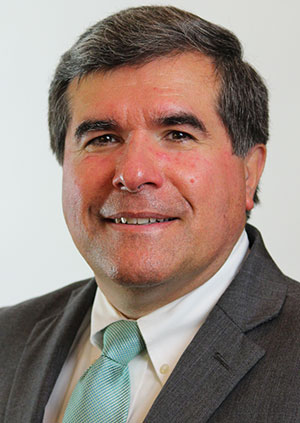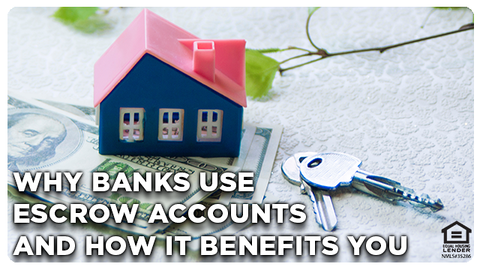
Why Banks Use Escrow Accounts for Homeowner’s Insurance and How It Benefits You

Are you double-paying your homeowner’s insurance with an escrow account? What is the benefit of an escrow account, and is it really necessary?
Insurance escrow accounts can seem confusing, but it’s important to understand why banks require insurance escrows, and how they work in conjunction with your homeowner’s insurance payments to benefit you in the long run.
What is an Insurance Escrow Account?
An insurance escrow account is a savings account set up by your mortgage lender to cover items such as your homeowner’s insurance premium, real estate taxes, and private mortgage insurance.
Initial Premium Payment: Before closing on your home, you’ll pay the first year of your homeowner's insurance premium upfront. This ensures that you’re covered for the first year from the day you take ownership.
Payment At Closing: Banks also require a “cushion” within the escrow account, so as you set up your escrow account, you will deposit an additional 2-4 months at closing. This cushion is meant to help cover any insurance increases in the future.
Following Monthly Payments: Once you’ve closed on your home, your monthly mortgage payments will include a portion that goes into your insurance escrow account. These payments will eventually accumulate to cover your second year of homeowner’s insurance. Each monthly payment is 1/12th of your annual premium.
For example, if your annual insurance premium is $2,400, $200 of your mortgage payment ($2,400 divided by 12) will be deposited into your escrow account each month. By the end of the first year, your escrow account will have accumulated $2,400 to cover the insurance premium for the following year.
Visualizing the Process
|
Before Closing |
First Year of Insurance Paid |
|---|---|
|
At Closing |
2 Months in Escrow |
|
Month 1 |
3 Months in Escrow |
|
Month 2 |
4 Months in Escrow |
|
Month 3 |
5 Months in Escrow |
|
Month 4 |
6 Months in Escrow |
|
Month 5 |
7 Months in Escrow |
|
Month 6 |
8 Months in Escrow |
|
Month 7 |
9 Months in Escrow |
|
Month 8 |
10 Months in Escrow |
|
Month 9 |
11 Months in Escrow |
|
Month 10 |
12 Months in Escrow |
|
Month 11 |
13 Months in Escrow |
|
Month 12 (Bank Sends Annual Premium to Home Insurance Company) |
14 Months in Escrow (Year 2 Premium + 2 Month Cushion) |
Your escrow account should never have less than the 2-month “cushion”, but should never exceed 14 months of payments as well.
The 2-Month “Cushion”: Handling Insurance Changes and Escrow Adjustments
If your homeowner’s insurance premium increases, you may get a surcharge and an increase in your escrow payments to accommodate the higher premium. Your bank may give you upwards of a year to reinstate your “cushion” and get your escrow account current again.
Conversely, if your insurance premium decreases, you might receive a refund or have your payments adjusted accordingly.
FAQs About Insurance Escrow Accounts
Why do banks require insurance escrow accounts?
Banks require escrow accounts to protect their investment. When a borrower puts down less than 20%, the bank wants to ensure that insurance premiums and property taxes are paid on time. This minimizes risk and ensures the property is protected.
What happens if I sell my home or switch insurance carriers?
If you sell your home, any unused portion of your escrow account is refunded to you within 30 days of the sale. If you switch insurance carriers or your premium changes, your loan servicer will adjust your escrow account accordingly. You may get a refund if premiums go down or be charged a surcharge if they increase.
Can I pay homeowner’s insurance on my own instead of using escrow?
While you may have the option to pay for homeowner’s insurance directly if you have more than 20% down, using an escrow account can simplify your finances. It allows you to make monthly payments rather than a large annual payment, and ensures that your insurance is always paid on time.
Is homeowner’s insurance provided by my lender?
No, homeowner’s insurance is not provided by your lender. You have the freedom to shop around for a policy that fits your needs and meets your mortgage requirements. Some lenders may have partnerships with insurance companies, but the choice of provider is up to you.
Do I need to check with my lender about the 20% down rule?
Yes, check with your lender about whether putting down 20% or more waives the requirement for an escrow account, but the first year’s payment is always due by closing.
Closing Thoughts
Navigating homeowner’s insurance and escrow accounts can seem complex, but understanding these components will help you manage your finances effectively.
By setting up an escrow account, you’re essentially creating a savings plan that ensures your insurance premiums are covered year after year, simplifying your budgeting process. If you have any specific questions or concerns, give us a call or contact us online for personalized guidance.